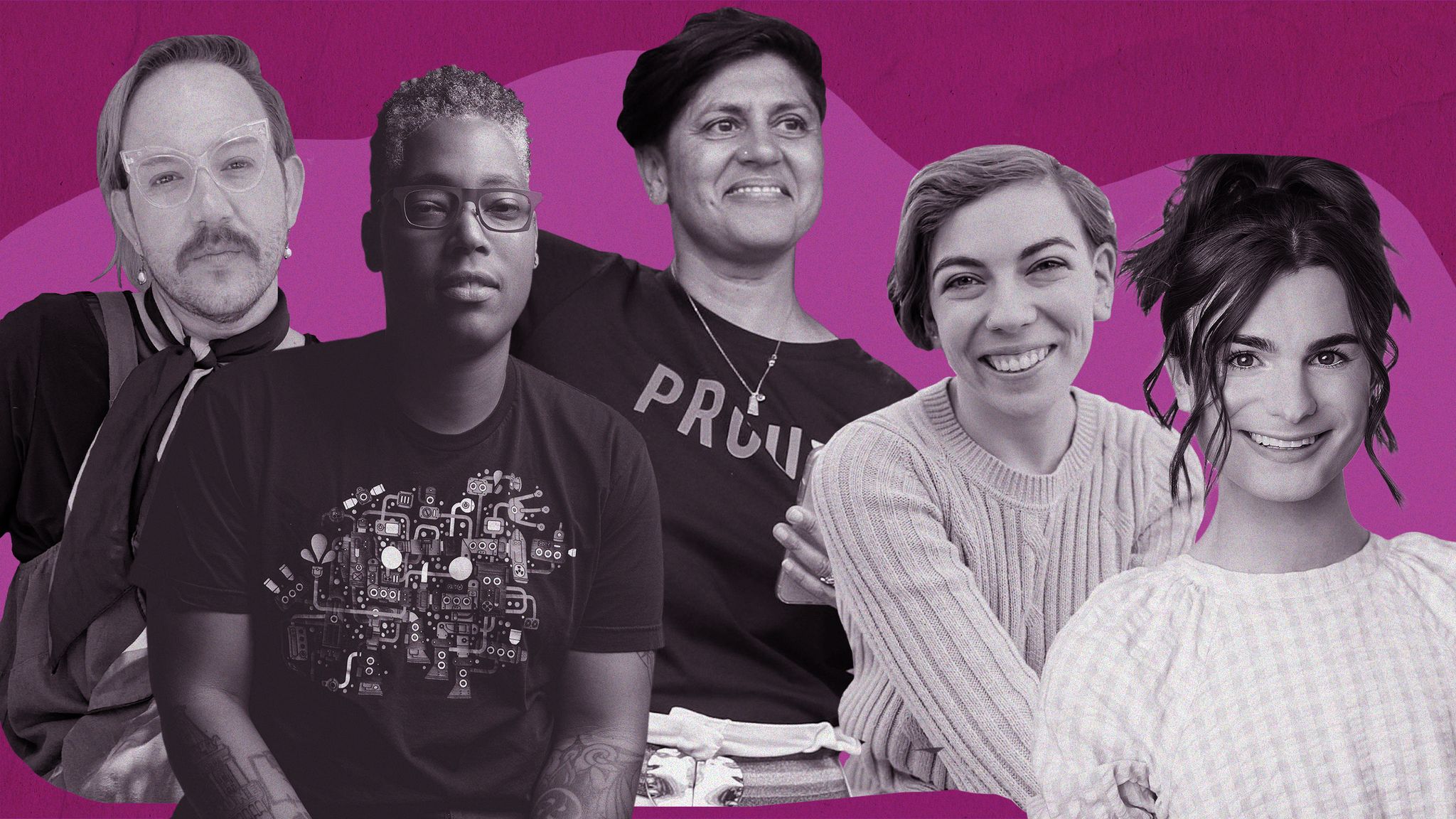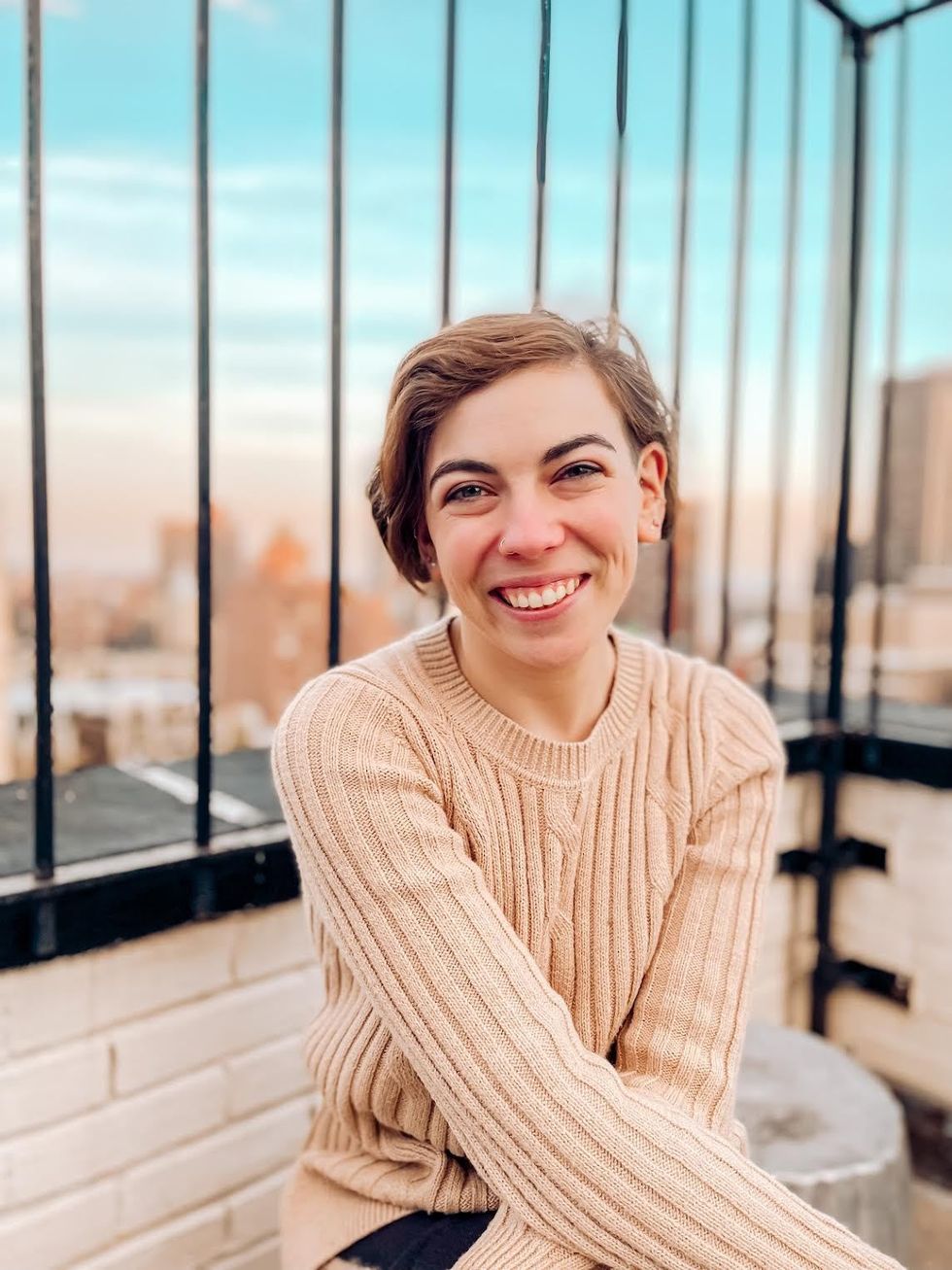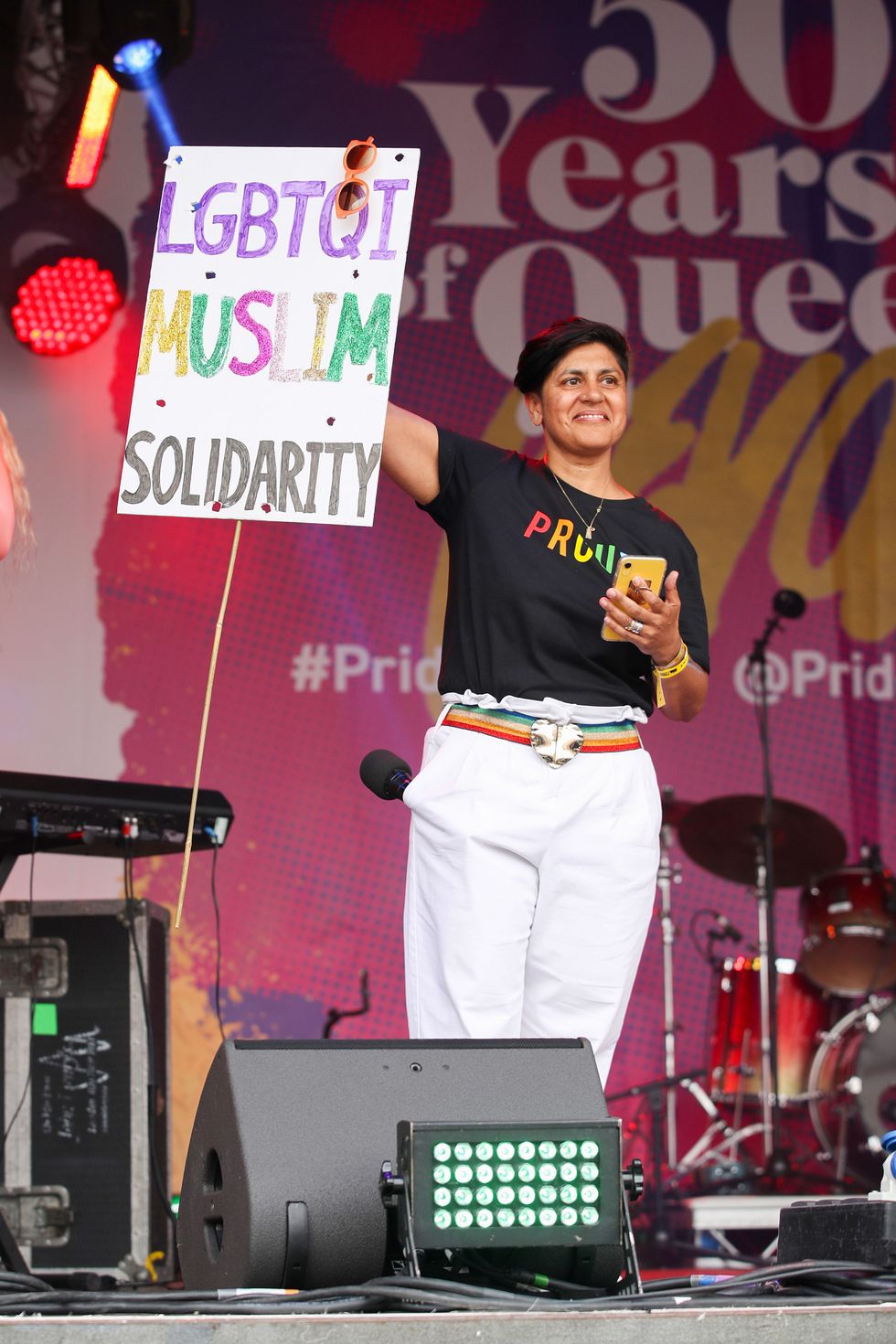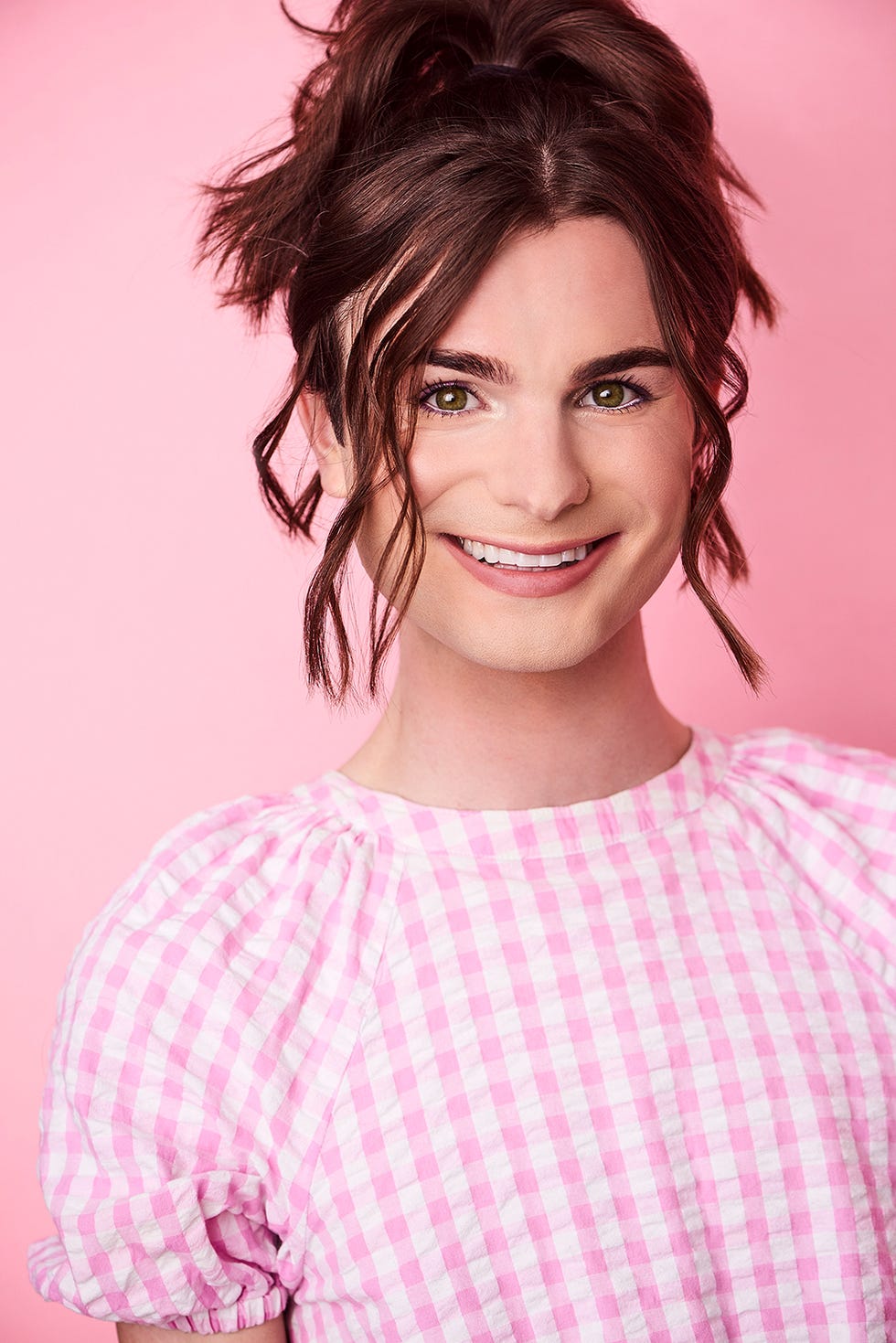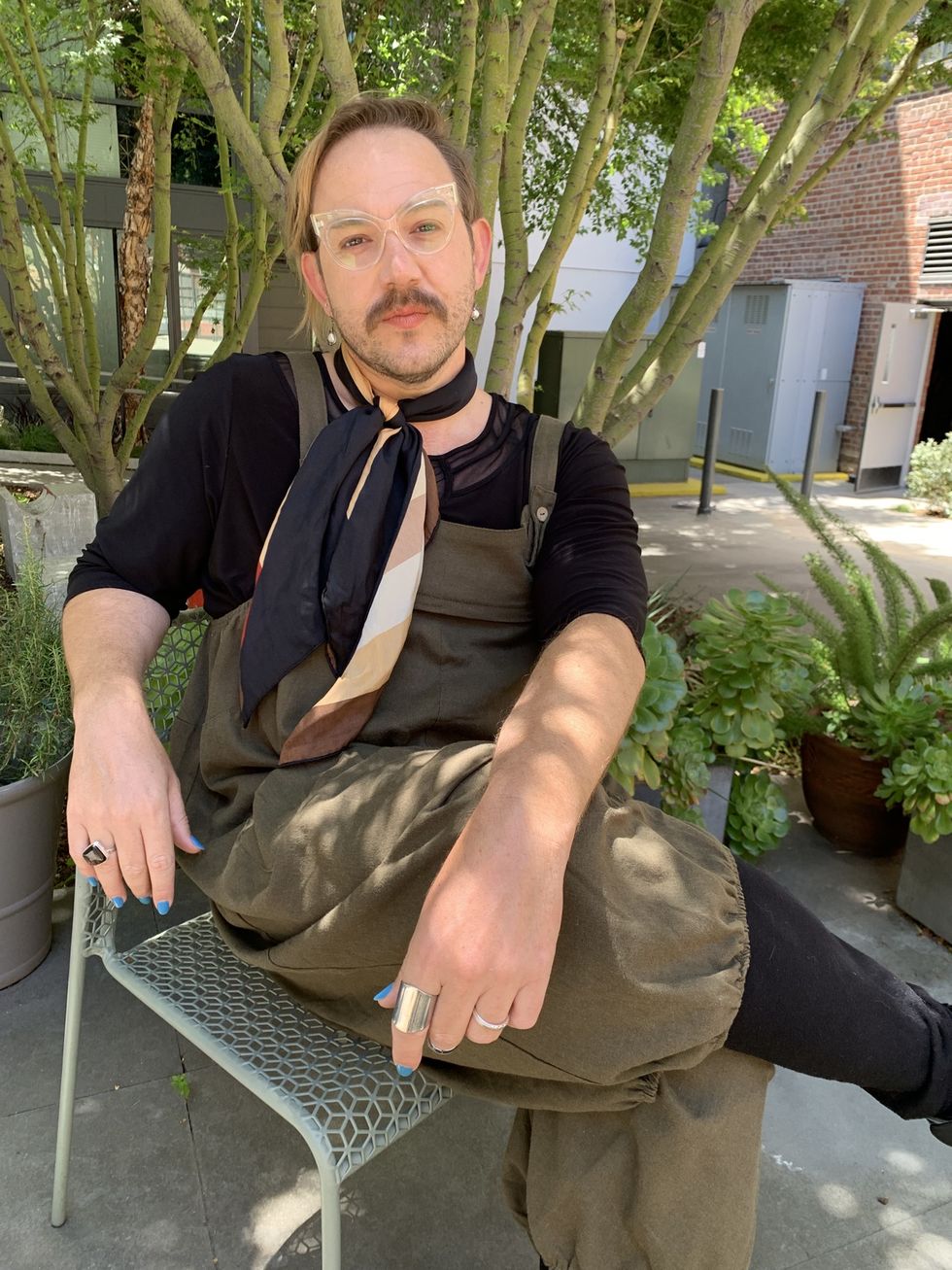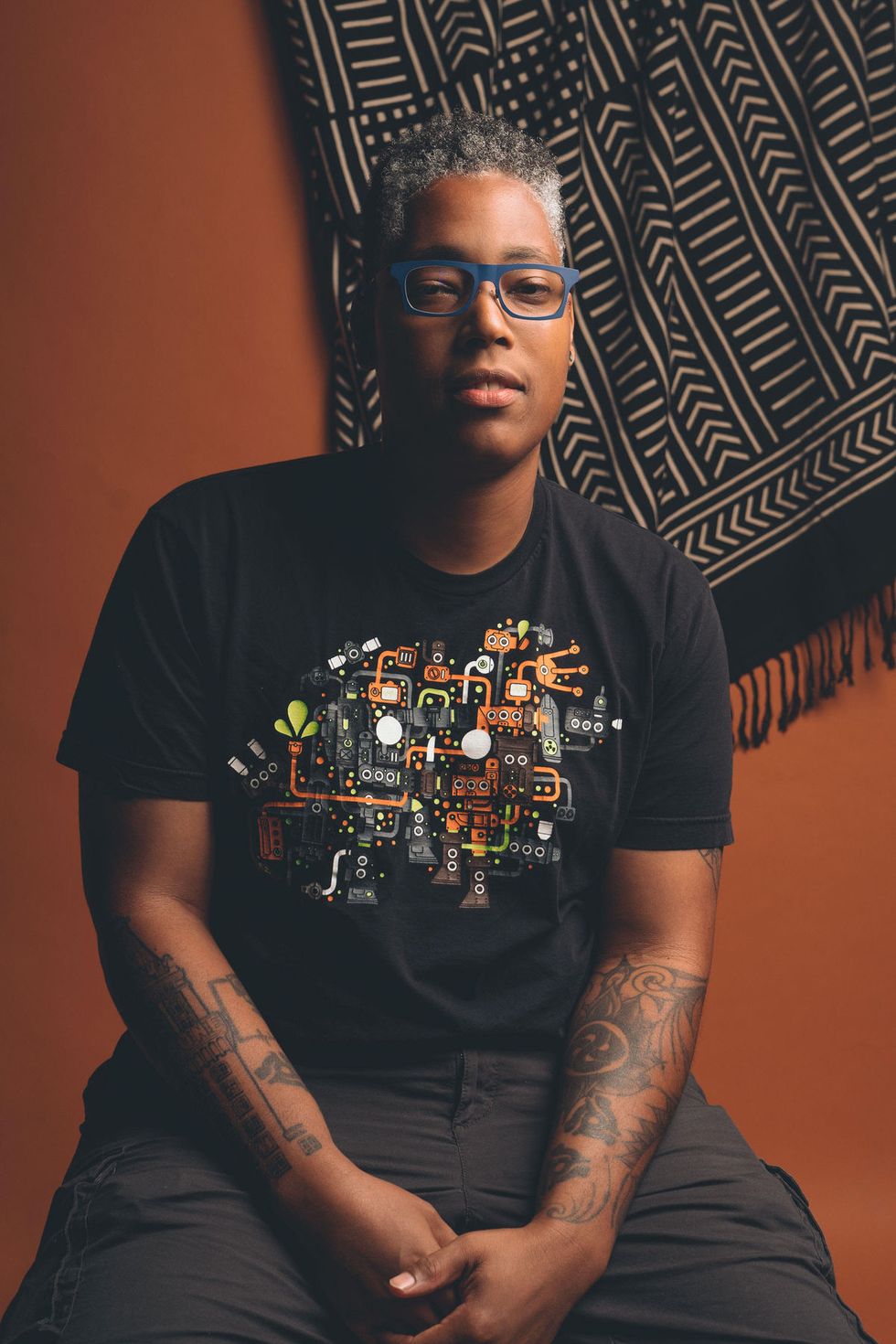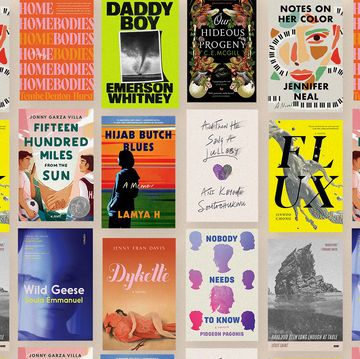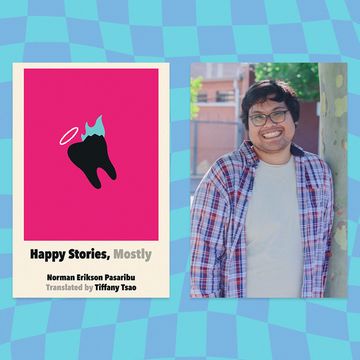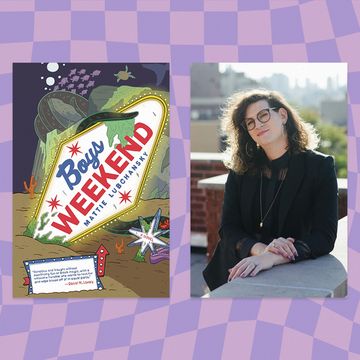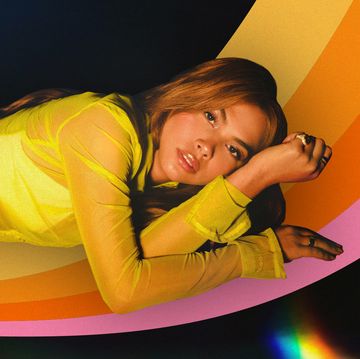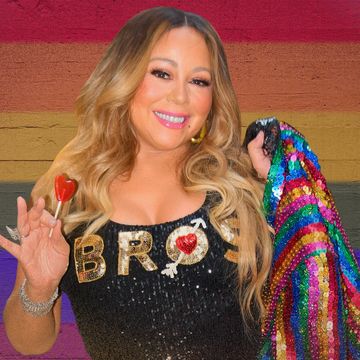June is Gay Pride Month. The monthlong celebration can seem like an excuse for companies to drape themselves in rainbows in order to sell, sell, sell. However, Pride was actually born out of a 1969 protest at Stonewall Inn in New York when ordinary people took it upon themselves to stand up against unjust police action and the “Public Morals Squad.” (Yep, that was a real thing.) In the process, a queer liberation movement was ignited.
The moral of the story: There’s an incredible power in collective action. Which is why this month we want to introduce you to five LGBTQ+ leaders using their positions to create lasting change. While their fields are diverse, including entertainment, documentation, and education, their mission and impact are powerful. Read on to meet the ordinary people turned changemakers who are creating spaces for the LGBTQ+ community (and allies!) to thrive.
Zoe Stoller, content creator and educator
Like a lot of people, Zoe Stoller grew up believing they were straight and cisgender. But it wasn’t until their junior year of college that they realized that wasn’t the case. It was through a series of internet deep dives that they came across a label that worked better — genderfluid, an identity that falls within the nonbinary umbrella and describes someone whose gender shifts and changes over time.
“Thanks to the phenomenally validating and inclusive queer education I’d received on social media, I realized that I didn’t have to choose just one set of pronouns — I could use multiple!” they recall.
However, it was also through those internet deep dives that Stoller realized they wanted more, namely an inclusive community where anyone questioning, confused, or supportive could find nonjudgmental answers. Which is exactly what she created on Instagram and TikTok. Stoller’s videos and infographics are full of information, all pointing toward a central theme: You are normal and worthy.
“I believe that we’re always growing and learning more about ourselves and the world around us,” they say. “And so, I try to stay open to self-discovery, especially when it comes to exploring how various parts of my identity might be different from societal ‘norms.’ This mindset actually led me to realize this year that my queer identity falls within the asexual and aromantic umbrellas as well — which is a part of myself that I’m still exploring! I’m excited to keep learning about who I am and see where my journey of self-discovery and self-development goes from here.”
How they got interested in creating an educational space on social media
“My work on Instagram and my goal of sharing free, accessible LGBTQ+ education really stemmed from my own experience of discovering my gender. After spending a great deal of time questioning my identity and being unsure of where to find queer information, I started poring through the work of LGBTQ+ content creators on social media — and I was so helped and inspired by the education they shared about LGBTQ+ identities, as well as discussion of their own experiences of self-discovery. This led me to realize how powerful social media can be in spreading vital information that often isn’t discussed in mainstream circles, as well as in helping people with marginalized identities feel validated and part of a larger, supportive community. And I decided I wanted to give to other people what these content creators had given to me — the tools to expand my understanding of the possibilities of identity, and empowerment and validation, as I figured out my identity. As I was creating my own page, I knew that it was essential that my corner of the internet always felt safe, affirming, and supportive — because those are the qualities that create an ideal environment to learn and grow, especially if that comes with fear and anxiety, which can often happen as you’re reckoning with yourself and taking in new information.”
On protecting their mental health while creating a safe space for others
“I’ve definitely gotten some mean-spirited comments from people when the information that I’m sharing is especially spicy or ‘controversial.’ In fact, there have been times when my content has gone viral specifically because people are flooding the comments with hate. This can definitely feel overwhelming, and I’ve spent a lot of time figuring out how to best have boundaries and protect my mental health in times like these while also moderating the comments on my posts and deleting/blocking people as necessary. But I also know that in the end, the mean comments just lead to more engagement [with] my content, which hopefully then pushes it out to people who actually will benefit from and appreciate it. And the people who do enjoy my content and want to learn more about the LGBTQ+ community often tell me so in the comments or in my DMs. I get so many messages from people sharing that they’ve learned more about themselves, or someone they love, or the community at large, and it makes me so happy and validates all of my work.”
On deciding to get their master’s in social work
“I actually decided to go down the social-work path and get my master’s thanks to my work on Instagram and social media. As I was creating content about LGBTQ+ identities and experiences, I realized how passionate I was about this topic and how fulfilled and excited it made me feel to work in this realm. I’ve always known that in my career I want to do something that makes me feel just that, and the field that I was in at the time, marketing, didn’t quite give me that feeling. I was very taken with the field of social work, as it’s very social justice-oriented and focused on empowering individuals and communities, especially those who are typically underserved in the world — which aligns well with my own goals in my social-media work. So, I decided to pursue this path and go to graduate school to be an LGBTQ+-focused social worker. I just finished my first year of school, and I’m very happy to report that social work is indeed a wonderful fit for me. I am so enamored with the profession and inspired by everything I’ve learned and all of the people I’ve met.”
Anjum Mouj, safeguarding and diversity consultant
On May 5, 2022, Queer Britain opened its doors. The nation’s first LGBTQ+ museum, located in Kings Cross, is a milestone for the community, which has often struggled to gain public acceptance and significant legal protections in the U.K. Bringing the project to life was a dedicated group of individuals, including board trustee Anjum Mouj, who also works with the Imaan Muslim LGBTQI group. The way she sees it, there’s power in knowing where you’ve come from.
“Documenting queer lives for our future generations and our now generations is both profound and powerful,” she says. “I have grown into myself. I’ve been fortunate to be and continue to be a catalyst for change. I’m doing who I am — all the salient bits of me are in my volunteering!”
On Britain’s relationship to the queer community
“I actually started volunteering while at university for a group called Asian Action Group, and ultimately we fell out because in the late ’80s, Section 28 was imposed [a of laws across Britain that prohibited the “promotion of homosexuality”]. I wished to take the organization banner, which I made, to the demonstration against the clause, but they ousted me from the group instead. … It lit a fire in me. I am Asian, I am Muslim, I am a lesbian — which of these salient identities should I repress, ignore, not speak about, or leave outside?”
What’s gained by documenting queer history
“Queer people have always existed in history, and often their stories are overlooked, and at times their sexuality, race, faith, or gender has not been discussed, or it’s been hidden. It’s important to highlight queer voices and people throughout history in all aspects and walks of life — from science to art, engineering, and writing, music, and much more. The museum will definitely help educate people on how queer people have lived, suffered, survived, and most importantly, thrived — and how we continue to do so. Legislation like Section 28 in the late 1980s definitely stunted progress for queer liberation, as so many stories have been lost. The latest government strategy to exclude the trans community from the ban on conversion therapy is another divisive and nonsensical act that needs profiling. At Queer Britain, pulling together how and why this has happened gives space for people to think and develop their understanding about the actions necessary to achieve justice and equality. Now as much as ever, having a museum that celebrates LGBTQ+ people is super-important.”
What Mouj hopes that all visitors will take from their visit to the museum
“We have tried to build in intersectionality from the get-go. We have been and continue to be focused and diligent; we have consciously included to avoid unconscious exclusion. We ran a number of focus groups from different people with intersecting identities before we officially developed our vision. We have listened and acted on the suggestions and have intersectionality embedded in our board of trustees. Inclusion is always a journey; it doesn’t stop, and we are in that adventure. LGBTQ+ equality, like all anti-discrimination, is done in the doing. It is a process, a constant vigilance that maps every decision and non-decision, every microaggression, every aspect of community development, unity, staff retention, development, well-being, and promotion, every gesture of neglect or violence to be reflected on and thought through for the potential harm that might be, [and] often is, generated and felt. It is constant [and] therefore requires constant work.”
Dylan Mulvaney, content creator and actor
Dylan Mulvaney has toured with productions of The Book of Mormon, Oklahoma!, and Spring Awakening. But it wasn’t until the lockdown that she took on the role she was meant to play — herself. After coming out as trans, the actress took her transition to TikTok, hilariously documenting the highs and lows of her initial days of girlhood, which have included everything from sleepovers to Bridgerton balls. Mulvaney’s hope is that not only will her hilarious and heartfelt videos appeal to allies but will also help normalize the trans experience.
“I have so many cheerleaders on the Dylan train,” she says. “I think my gal friends stand out the most — they play dress-up with me and help with makeup and navigating the girl world. I’ve also been overwhelmed with help from the trans community! So many lovely tips from my trans sisters.”
On discovering she was trans
“I knew as a 4-year-old that I was a girl but quickly let go of that pipe dream when I entered into Catholic school. I came out as gay when I was 14, which felt like the end of the world, and being trans was nowhere in sight. Once the pandemic hit, I had my first moment to sit with myself and ask the uncomfy question: Where did that 4-year-old girl go? I identified as nonbinary for over a year, one step closer to my current identity. Finally, this year, I’ve come out for a third time — third time’s a charm, maybe! — and I’ve never been happier. The pipe dream of my girlhood has been well worth it. It’s my reality.”
On using social media to inform her transition
“I have been inspired by trans and queer content creators for years, and so much of my information on transness has come from social media. I started creating my own content to fill in the blanks on topics that I hadn’t found info on. I also love talking about the taboo things that come with being trans. I’m an open book! My videos serve as a little diary of my transition. I’m a little nervous about creating gender-affirming-surgery content. I want to make sure it’s my decision and no one else’s. Followers love giving their opinions, but this is one area I need to tackle on my own!”
On her plans for Pride Month
“I am celebrating big this year. I’ll be on floats and many corporate campaigns! I’m using this month to make the money I need for different transition surgeries I hope to get. Might as well let the corporation pick up the check on those! I also want to use this month to give back to my trans community as well. It can be an overwhelming time but ultimately a celebration of how far we’ve come. I want people to know that being yourself is sexy. Every day, I wake up and choose to be the most authentic version of myself possible. The internet is seeing that, and I want everyone to find the confidence that I’m currently experiencing. There’s an infinite amount to go around!”
Kevin Seaman, artistic and executive director of Diamond Wave
Kevin Seaman has literally written a book about their sexuality and gender journey. Even still, they note that it can be difficult to find your footing in a society determined to stick to heteronormative messaging. Which is why art has been such a powerful part of their lives, and what led to the creation of Diamond Wave, Seaman’s San Francisco-based queer organization that offers community events and consultations to queer artists.
However, Seaman also wants to make something else clear: Mental health is everything. Find the tools you need to protect yourself on your own journey before you give back to others.
“I want to mention an organization that has been critical in my journey,” they say. “Queer LifeSpace provides low-cost mental-health services to queer and trans folks. Having this mental-health support during some of my most difficult years was invaluable. One of my first therapists at Queer LifeSpace recommended reading bell hooks’ The Will to Change: Men, Masculinity, and Love, which changed my life and sparked the creation of #femMASCULINE.”
How drag assisted their gender journey
“In college, a friend told me, ‘There are guys who happen to be gay, and gays who happen to be guys. You happen to be gay.’ I remember thinking how lucky I was that I fit the masculine mold. This was unfortunately reinforced in many gay spaces where I felt I needed to be as masculine as possible in order to be deemed sexually attractive. In my late 20s, I got fed up with it, though, and did a 180, running toward drag performance as a way to reconnect with the femininity that I was previously denied and that I had denied myself throughout my life. Birthing LOL McFiercen [their drag persona] was a beautiful journey of rainbows and sparkles. I’ve made so many dear friends and have had the opportunity to travel and perform with drag legends. Pieces of LOL’s wardrobe started to make their way into my everyday gender expression. Some wedges here, a statement earring there … and at some point, I just became tired of putting on LOL’s body — the hip pads, boobs, makeup, and hair — and began seeking instead to invest in my own body and come out from behind the mascara.
The realization and acceptance of my nonbinary gender identity finally came to me during the pandemic, when so much of our lives were disrupted. Not needing to dress for work, for a sexual space, or a drag space let me reassess how I wanted to present myself. Pants were the first thing to go, and I’m continuing to play with fashion to keep up with my ever-evolving gender expression. One big step for me was getting my official gender marker (X) on my driver’s license. I know there are many reasons that people choose not to share their gender journeys with the government, but for me it was a necessary step to validating something I have always known but could never truly express. I still continue to settle into my nonbinary identity. Some days, I feel like an impostor. Other days, I feel totally accepted.”
How Diamond Wave created its holistic approach to assisting the queer art community
“Diamond Wave is a fusion of my own creative and consulting practices and was created after years of frustration with our capitalist system that values but doesn’t prioritize paying artists. In this organizational structure, I’m able to do all of my work, and I want to share this knowledge and model with other artists. You don’t have to choose between art and activism, art and administration, art and consulting. These are all critical components to succeeding as an artist. Our organization is still young and growing, but I’m so thankful that we’re hiring our first position, have just received a major $335,000 grant to work on the collaborative Artists’ Adaptability Circles program, and continue to attract consulting clients.”
How art and activism go hand in hand
“I originally came to my creative expression through theater. As an actor, my job was to interpret the words, take the direction, engage with my castmates, and make the audience believe. At some point, I think I was acting in a show a friend had written, and I realized that I had grown tired of telling other people’s stories and wanted to invest in honing my own creative voice. Although I haven’t always had the self-awareness to understand the activist component of my creativity, my work has always embodied aspects of social movements. One of my first shorts that I created with videographer Jenn Heard was about four mimes that act out sexual positions. Although I was clearly in it for the slapstick comedy, the work was also about centering and creating laughter around sex and sexuality. Growing up in a Catholic household, sex wasn’t something we talked about. SILENCE=FILTH was a way for me to center and assert my sexuality while spreading laughter. As a queer person rooted in the rich histories of San Francisco LGBTQ+ culture, art and activism have always been inseparable. For many queer people, just having an opportunity to express our authentic selves is activism — the world wasn’t created for us, so our existence and creativity is boxed into activism.”
Sean Saifa Wall, Marie Skłodowska-Curie Fellow (Intersex: New Interdisciplinary Approaches) and co-founder of IJP
An intersex person is often born with body traits that fall outside the male/female binary. It’s also something that doesn’t always get a lot of attention during Pride Month. Enter Sean Saifa Wall. As an intersex person, activist, and co-founder of the Intersex Justice Project, he’s been instrumental in Lurie Children’s Hospital of Chicago denouncing intersex genital surgeries on infants. During an ABC News segment, he also confronted the surgeon who performed his own surgeries when Wall was just a child. Ultimately, Wall’s goal is to create a world where intersex people don’t feel the pressure to live in the shadows or conform.
“Intersex people exist,” he says. “We are your siblings, niblings, parents, friends, lovers, and chosen family. Intersex variations are not something that exists ‘over there’ but shows us the complexities in our bodies as it relates to hormones, chromosomes, genitals, and reproductive organs. There are 40 documented intersex variations that [compose] almost 2 percent of the human population, and if we include people with polycystic ovarian syndrome (PCOS), that would bring intersex variations to 6 percent or higher! Intersex children and adolescents should not be subjected to invasive, medically unnecessary surgeries because their bodies are different. Intersex people deserve to live with dignity and free from shame, secrecy, and stigma.”
The spark behind the Intersex Justice Project
“The Intersex Justice Project was co-founded by three people: Lynnell Stephani Long, Pidgeon Pagonis, and myself. The desire to found this organization came from a desire to advance intersex rights by people of color. Personally, as one of the leaders in the intersex movement, I felt that I was always bringing in issues related to race, class, disability, and other identity categories overlooked by the movement at the time. I wanted a place where I could feel safe, seen, and supported in my unapologetic and, at times, radical vision for bodily autonomy.”
Progress made so far
“The biggest win for the Intersex Justice Project was getting Lurie Children’s Hospital in Chicago to apologize for the harm that intersex people have experienced at their hospital and agree to a moratorium on intersex genital surgeries for six months. That victory was the turning point for advocates to end clitoroplasties and vaginoplasties on intersex girls at Boston Children’s Hospital. Two major children’s hospitals in the United States were transformed by intersex advocacy. Although not directly connected to the organizing effort, I witnessed the work of intersex activists and allies in New York City push for an education campaign that would educate parents of intersex children. Through the tireless work of InterAct and patient advocates, New York City Health and Hospitals will ‘defer all medically unnecessary surgeries on intersex children.’ I never thought that I would see wins like this in my lifetime.”
How African American spirituality impacts his life and mission
“When I went to see a geneticist in October 2020, he told me that my particular variation, androgen insensitivity syndrome, was inherited through the X-gene and passed through the women in my family. I felt hundreds of years of history in that moment. For me, it was confirmed that my intersex activism is not about me but exists on this plane where ancestry and legacy overlap and are intertwined. I am the living embodiment of my ancestry. I am the people who could not speak or share the truth of who they were for fear of shame, further isolation, ridicule, or threats of violence. Through my words and my labor, I speak sweetness to their suffering and offer dignity to the places where they have been downtrodden.”
Laura Studarus is a Los Angeles-based travel writer with bylines at Fast Company, BBC Travel, and Thrillist. Sometimes she can go several hours without a cup of tea.
Get Shondaland directly in your inbox: SUBSCRIBE TODAY
